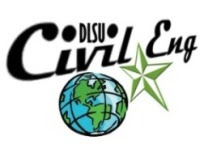Dr. Alexis Fillone of the Transportation Engineering Division, Civil Eng. Dept., DLSU-Manila was a speaker of the pre-event of the Better Air Quality Conference last November 8-11, 2010, in Singapore. Dr. Fillone talked about the The Estimation Of Co-Benefit From Bus Global Rapid Transit (BRT) Introduction In Metro Manila Using Instittue For Global Environmental Strategies (IGES) Co-Benefit Guideline. 

Together with his co-authors (Prof. Dr. Atsushi Fukuda, Dr. Tetsuhiro Ishizaka, and Mr. Hidenori Ikeshita) from Nihon University-Japan, they also submitted the same paper as poster presentation in the Conference proper. Simply put, the Co-Benefit approach expands its coverage of cost-benefit estimation of a transport project by considering the environmental costs (i.e., air and noise pollutions) and traffic accident costs. While in public transportation, there is a growing consensus around the Asian region for developing countries to introduce the much cheaper BRT compared to the LRT, MRT or subway systems. Hence the paper used the proposed IGES co-benefit guideline to measure the impact of a proposed BRT line in Metro Manila.

Master Planning of Marina Bay Area, Singapore
Dr. Fillone also had a chance to go around Singapore and marvelled at the efficient public transport system of the City State as well as the way the city is being planned.


 The One Million Safe Schools and Hospitals Campaign was spearheaded by the UNISDR and partners (e.g. UNICEF, WHO, WB, UNESCO etc). The campaign calls individuals (students, faculty, administrators) or organizations to make a commitment by pledging online to do specific actions on any of the three components that could make schools and hospitals safer before a disaster: public awareness, emergency and disaster preparedness, and disaster risk reduction. The campaign aims to raise public awareness and create a demand for safe schools, hospitals and health facilities that will:
The One Million Safe Schools and Hospitals Campaign was spearheaded by the UNISDR and partners (e.g. UNICEF, WHO, WB, UNESCO etc). The campaign calls individuals (students, faculty, administrators) or organizations to make a commitment by pledging online to do specific actions on any of the three components that could make schools and hospitals safer before a disaster: public awareness, emergency and disaster preparedness, and disaster risk reduction. The campaign aims to raise public awareness and create a demand for safe schools, hospitals and health facilities that will: 



.jpg)


